General Characteristics
- Toothless beak
- Amniotic egg with hard mineralized shell
- Tetrapod – feathered wings and scaly, clawed feet
- The youngest group of vertebrates appearing ~65 million years ago.
- Highly advanced and efficient systems
- ~10,000 species today
Evolution of Birds
- Evolved from reptiles – often called AVIAN DINOSAURS.
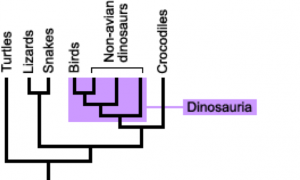
Figure 1: Relationship to reptiles and, iin particular, the dinosaurs - After the Creataceous-Palaeogene extinction event, birds diversified from theropod dinosaurs (as they survived the event that killed all other dinosaurs)
- Archaeopteryx is a transitional fossil between feathered dinosaurs and modern birds.
Great Transitions – Origin of Birds
Another great click-and-learn resource from HHMI – Comparing Anatomy of the Domestic Chicken – More evidence for the bird/theropod relationship! Check it out!
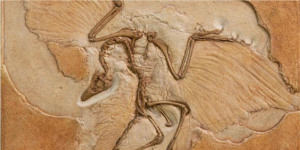
Major Evolutionary Advancement #1 – Feathers
Feathers (integument)
- Evolved for insulation/thermoregulation, displays, or water proofing.
- Initial feathers could not have provided lift – secondary function of feather evolution was flight
- Potentially evolved from scales (debatable) however a 2006 study confirmed feather keratin in crocodile scales during early development.
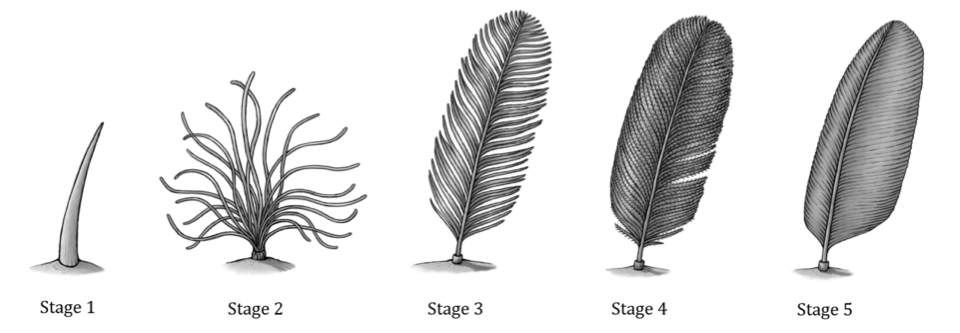
Figure 3: Proposed evolution of feathers. Notice how stage 2 resembles down feathers we see tday - Feathers are involved in sexual displays – males are often more colourful than females, which tend to be brown/plain.
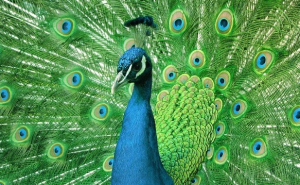
Figure 4: Male peacock - Brighter colours/completeness of feathers indicate fittest mate as that male has access to territory capable of facilitating the colour production.
Major Types of Feathers
Contour feathers
- Largest and most important
- Give bird its shape and colouring, while protecting the bird from physical objects, wind, rain, etc.
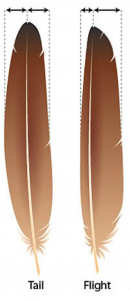
Figure 5: Flight and Tail feathers – notice the difference - Includes flight and tail feathers
Down Feathers
- Soft and fluffy!
- Not neatly arranged like contour feathers
- Found underneath the tough contour feathers
- Provide insulation for the bird
Filoplume
- Much smaller – have only a few barbs at their tips.
- Believed to have a sensory function, allowing birds to keep their feathers in order.
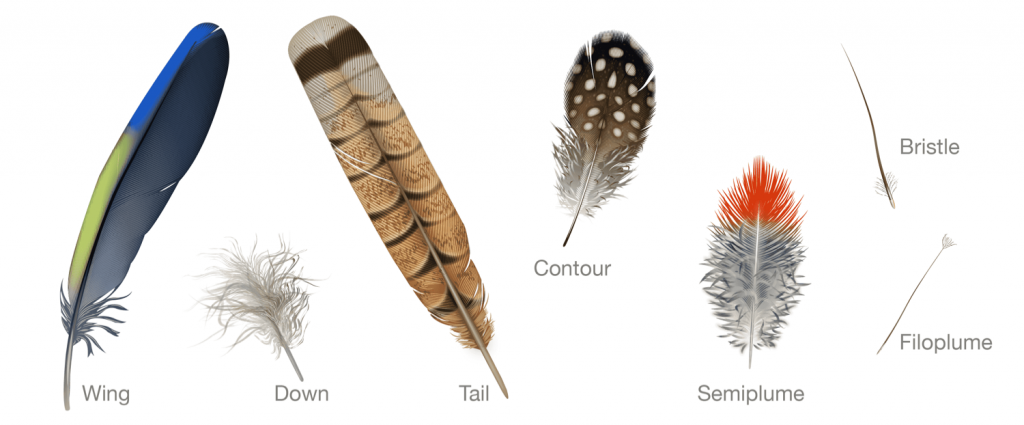
It is important to note that while feathers are a major evolutionary advancement (i.e. derived character) that will be (potentially) reflected in evolutionary divergences in the future – birds are the youngest class of vertebrates and on a lineage separate from mammals, therefore feathers are unique to Class Aves (unlike our past major evolutionary advancements from previous classes). Even endothermy (below) evolved twice – once in mammals and one in birds!
Major Evolutionary Advancement #2 – Endothermy
- Endothermy (“Warm blooded”)
- Regulate their body temperature internally. By maintaining a constant internal body temperature bodily functions occur at optimum levels of efficiency (this is known as homeostasis – more on this in bio 12 J)
- Allowed for decreased vulnerability to external temp. and be more active during night time (i.e. avoid higher predation times)
- More food required – most energy goes into maintaining temperature rather than growth.
General Anatomy
- Bipedal with feathery wings. Dry scaly, clawed feet.
- Toothless beak for eating, fighting, and grooming.
- Strong, hollow bones (light weight). Many bones are fused together – birds typically have less bones than other terrestrial vertebrates.
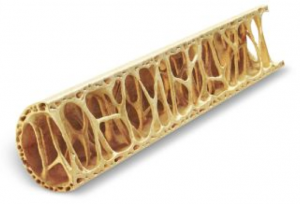
Figure 7: Example of a bird bone What benefits would hollow bones confer to members of class aves?
Physiology – Digestive System
- Birds face special challenges when it comes to obtaining nutrition from food. They do not have teeth, so their digestive system must be able to process whole food.
- Many have organs called the crop and gizzard.
- Crop = enlarged area of the esophagus where food can be stored/moistened before it enters the stomach or is reguritated for young.
- Gizzard = Specialized part of stomach that contains small bits of gravel that help grind food down through muscle contractions.
- Most have true cloaca.
- Birds have evolved a variety of beak types that reflect the vast variety in their diet, ranging from seeds and insects to fruits and nuts. The complexity of their digestive system (along with enzymes) allows for many different food sources to be consumed and digested. Because most birds fly, their metabolic rates are high (5-20x the resting metabolic rate of a running mammal) in order to efficiently process food.
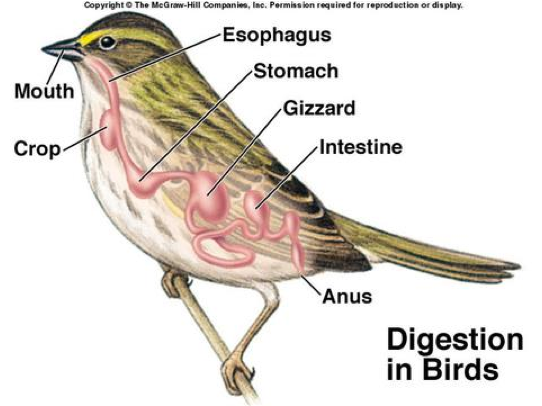
Physiology – Circulatory System
- Four chambered heart with double loop circulation
- Complete separation of deoxygenated/oxygenated blood
- Complete separation of oxygenated and deoxygenated blood – more efficient as blood that is circulated to the body is richer in O2 content.
- Birds tend to have larger hearts than mammals (relative to body size and mass). The relatively large hearts of birds may be necessary to meet the high metabolic demands of flight.
- Avian hearts also pump more blood per unit time than mammalian hearts (cardiac output – blood pumped per minute is the highest of the vertebrates.
- Fun fact: A hummingbird’s heart can beat up to 1200 times a minute and takes up approximately 2.5% of the total weight of the animal – human hearts are around 0.5%!
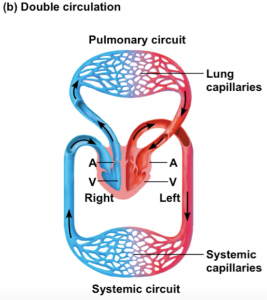
Physiology – Respiration
- Extremely efficient – this is needed due to the high demand of flight.
- Respiration through lungs – however, bird lungs are connected to large air sacs.
- When a bird inhales, air travels into lungs and the posterior air sacs.
- When the bird exhales, the air stored in the posterior air sacs moves into the lungs for gas exchange.
- This means that birds have a one way respiratory system and gas exchange occurs during inhalation and exhalation.
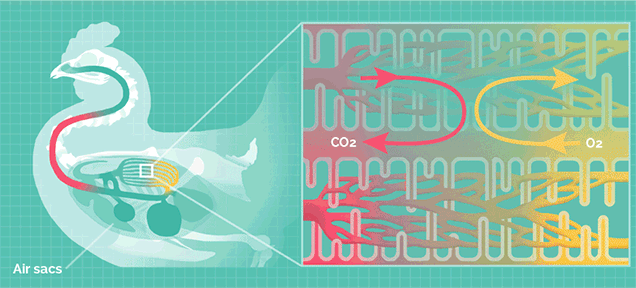
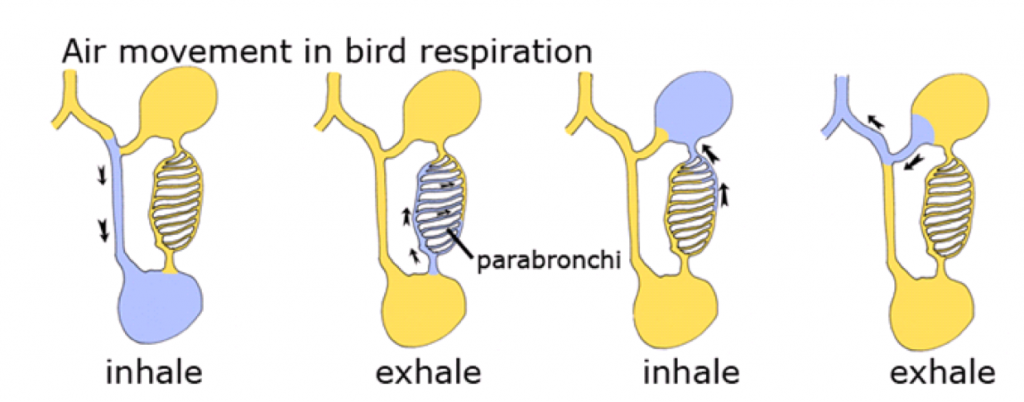
Physiology – Reproduction
- Internal fertilization and oviparous (hard-shelled amniotic egg)
- Since birds have cloaca, birds “cloacal kiss” to transfer sperm to the female.
- 90-95% of birds are socially monogamous, meaning they have only one partner (although the key word is social rather than sexual).
- Most birds incubate their eggs –a form a parental care.
- Bi-parental care is common – both males and females look after their eggs/young equally
- Keep sex organs small during most of the year. Why?
- 3% of bird species’ have penises. In the other 97%, the production of a protein kills off what would develop into a penis.
Fun Fact: Explosive Sex Life of Ducks
Comments by shaun pletsch